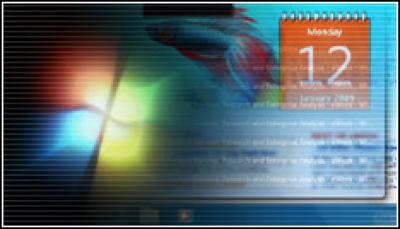Windows 7 Pricing Confuses, While Apple Keeps It Simple

Microsoft has announced a confusing pricing scheme for its new Windows 7 OS while, Apple is keeping it simple with its upcoming Snow Leopard OS release
Microsoft is at it again. The software giant has announced more details about its launch of Windows 7, which is slated for release on 22 October.
In true Microsoft fashion, it announced a pricing scheme that could easily confuse consumers who are going to the store to pick up a copy of the new operating system (OS), let alone businesses.
It shouldn’t surprise us. Right now, Microsoft offers four versions of Windows – Home Basic, Home Premium, Business and Ultimate. For comparative purposes with the US Windows 7 pricing figures just announced, they are priced at $199.95, $259.95, $299.95 and $319.95, respectively in the US. Of course, Microsoft contends that pricing its versions like this has nothing to do with confusing consumers and everything to do with ensuring the company is getting what it deserves for the features each version of the OS has.
It must work for Microsoft. With the announcement of Windows 7 pricing, the company has further confused consumers. This time around, Microsoft announced that it will ship three versions of Windows 7, instead of four that it shipped for Windows Vista. Great. But that didn’t do much to limit confusion in the marketplace.
Windows 7 Home Premium will cost $120 (£72.88) for an upgrade and $200 (£121.46) if the user decides to purchase the full version. Windows 7 Professional boasts a $200 upgrade price tag and a $300 (£182.20) charge for the full version. Finally, Windows 7 Ultimate, the premium version Microsoft has to offer, will retail for $220 (£133.62) as an upgrade and $320 (£194.35) as a full version.
Microsoft contends it’s making it “easier than ever” for consumers to find the right version of the software they want. But for most consumers and business customers that need to consider this pricing, it looks similar to what Microsoft tried with Windows Vista.
What’s so bad about making things easy? Perhaps it makes sense to Microsoft, since it spent so much on OS development. But for everyone else, the company’s pricing model is nonsensical. When the average consumer goes to the store looking for a new install of Windows 7, they’ll need to come armed with some good information to make that decision. If they don’t, they’ll be left deciding at the store if they want the upgrade or the full install. Then, they’ll need to determine which version they want. If they don’t have much knowledge of the differences, that could be a real problem. The same might be said for small companies that don’t have dedicated IT staff.
Apple, which is releasing a new version of its OS in September, has made it relatively easier. To upgrade as installation of Leopard to Snow Leopard, you’ll only need to pay $29 (£17.61). Those looking for a family five-pack will need to pay $49 (£29.76). Granted, Snow Leopard is more of an iterative update than a full, new OS like Windows 7, but I still think it proves a point. Simply go to the store, order a copy of Snow Leopard, and you’re all set.
The one thing working in Microsoft’s favour is the number of people who actually buy standalone operating systems. In the Windows ecosystem, it’s relatively small. For the most part, users both in the enterprise and in the consumer space buy computers from vendors that have already bundled the OS with the hardware. That has historically helped the company dodge criticisms over its pricing models. And it will probably work again.